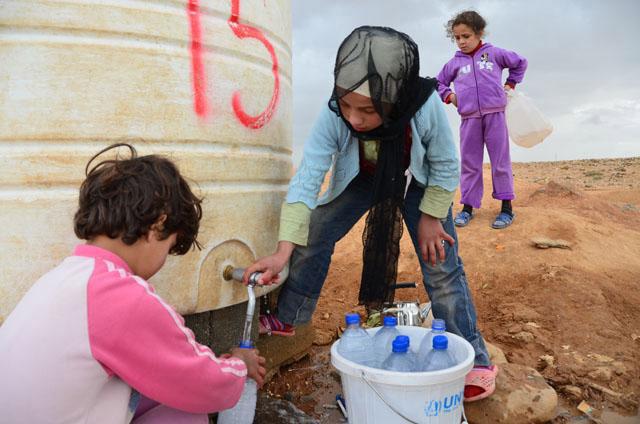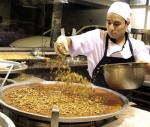You are here
Water deficit drops by 8 per cent thanks to 'more efficient supply'
By Hana Namrouqa - May 31,2018 - Last updated at May 31,2018

The drop in the water deficit is accompanied by a raise in water allocations, under the ministry’s water budget (File photo)
AMMAN — Jordan’s water deficit dropped by 8 per cent this year compared to 2017, government officials said, attributing the decline to an increase in the efficiency of the supply system, among other factors.
The water deficit in 2017 stood at 405 million cubic metres (mcm), Minister of Water and Irrigation Ali Ghezawi said, indicating that the figure dropped to 373mcm this year.
“Every year, the ministry is exploring new water resources, whether conventional or not, which is easing the water deficit. In addition, the rehabilitation of existing water resources and the increase of the system's efficiency were also major factors,” Ghezawi highlighted.
The drop in the water deficit is accompanied by a raise in water allocations, under the ministry’s water budget, announced annually in May.
Ghezawi said that water allocations this year will be 1,068mcm, while in 2017, the same figure stood at 996mcm.
The ministry has drilled new wells and renovated existing ones to improve their performance, which allowed increasing water allocations to the northern governorates, with an additional 1,200 cubic metres of water per hour, easing the water-stressed region.
Work is now underway to dig six new wells in Wadi Araba to supply agricultural projects with water and support development and income generating projects that provide area residents with new job opportunities, the minister said, noting that similar projects are also being implemented in Karak, southern Jordan Valley, Balqa and Deir Alla to improve water supply during the hot season.
“We expect water-related complaints this summer to drop after taking several measures to increase water supply, especially in the north... The additional water amounts we provided just recently should address the shortage and ease the situation,” Ghezawi told The Jordan Times.
With over 1.4 million Syrian refugees living in the country, demand for water has increased, especially in the north, where the water per capita share has dropped by half since Syrian refugees began arriving in the country, according to the ministry.
As the water per capita share in the northern governorates of Jerash, Ajloun, Irbid and Mafraq has always been below the national average and has only exacerbated with the north hosting most of the Syrian refugees, the ministry last year announced a strategy to improve water supply in the north, according to the ministry’s spokesperson Omar Salameh.
The 2016-2025 National Water Strategy indicates that the per capita share dropped from 147 cubic metres per year to 123 cubic metres per year since the start of the Syrian crisis.
Meanwhile, Salameh said that the ministry has been steadily decreasing water deficit over the past few years, but at the expense of available amounts.
“It is true that we are managing to decrease water deficit slightly and gradually over the past few years, but demand keeps rising and we are not catching up,” Salameh told The Jordan Times.
Related Articles
AMMAN — The Water Ministry has started implementing its recently announced 10-year strategy to generate over half-a-billion cubic metres (bc
AMMAN — Responding to a drop in annual per capita share of water by 16 per cent over the past five years, the government has launched a 10-y
AMMAN — Unconventional water sources are the Kingdom’s long-term solution to its water dilemma, government officials said on Wednesday, indi











